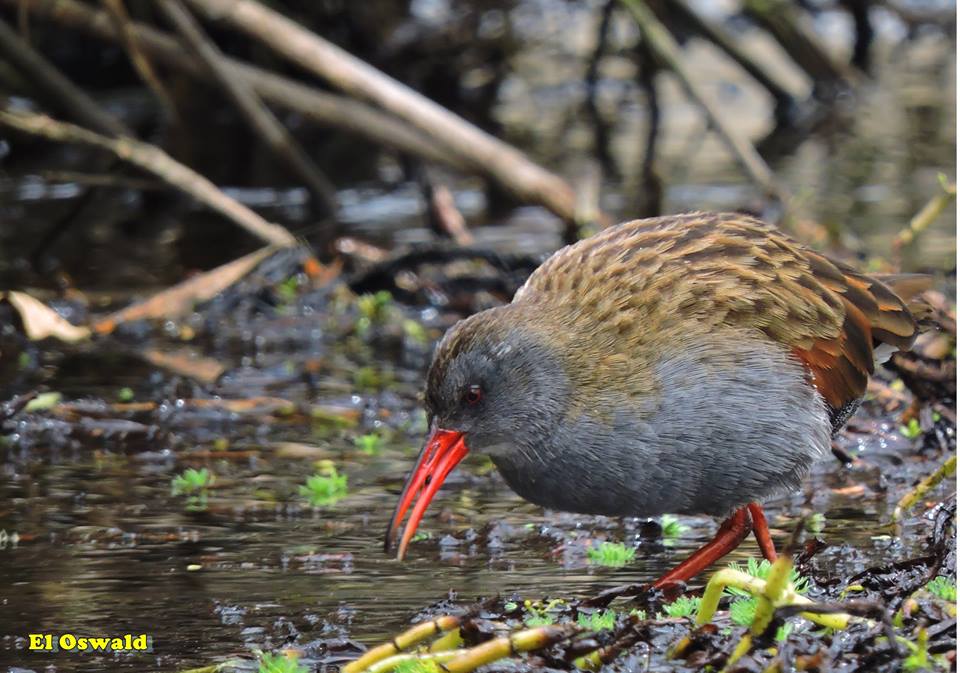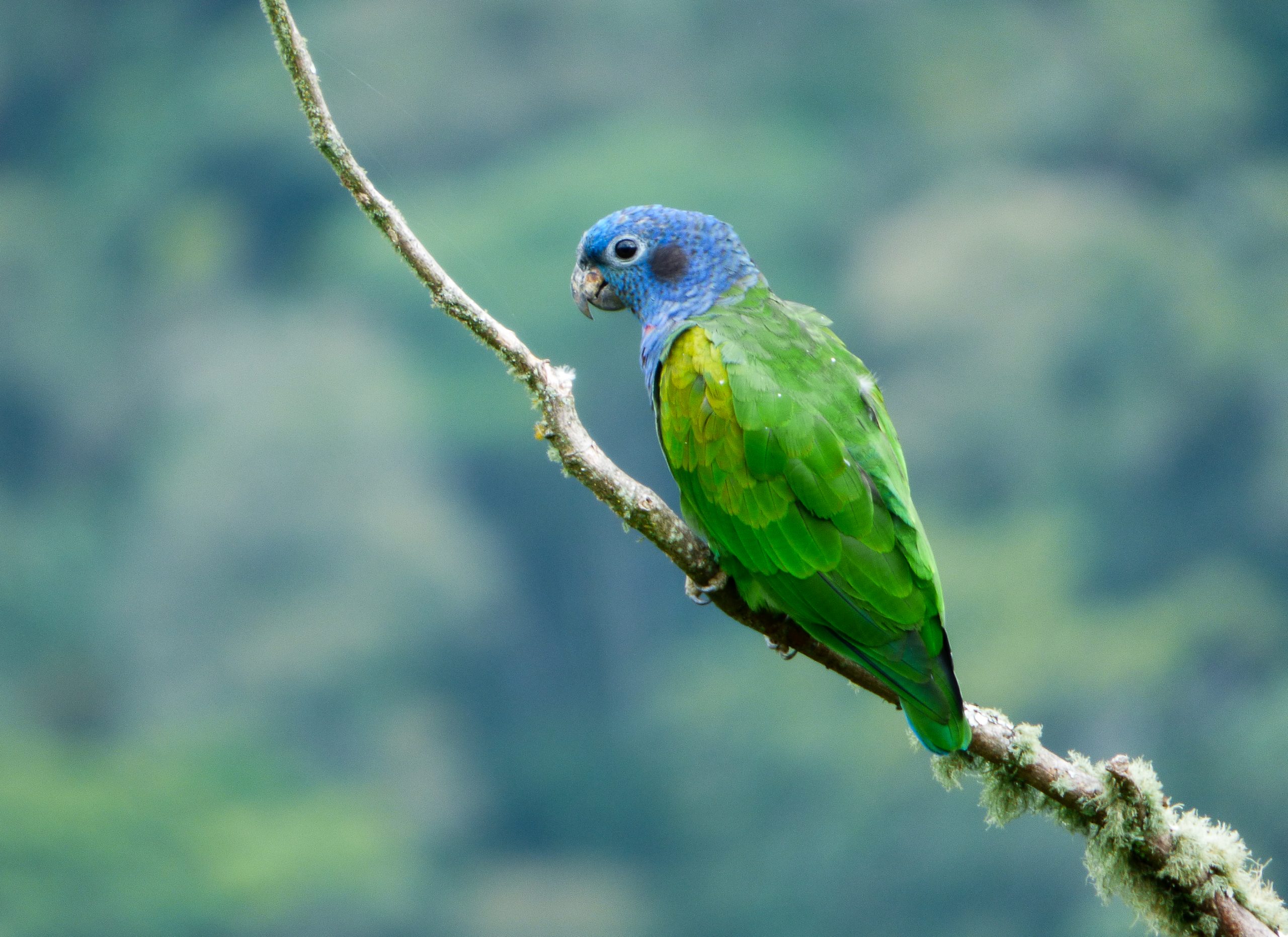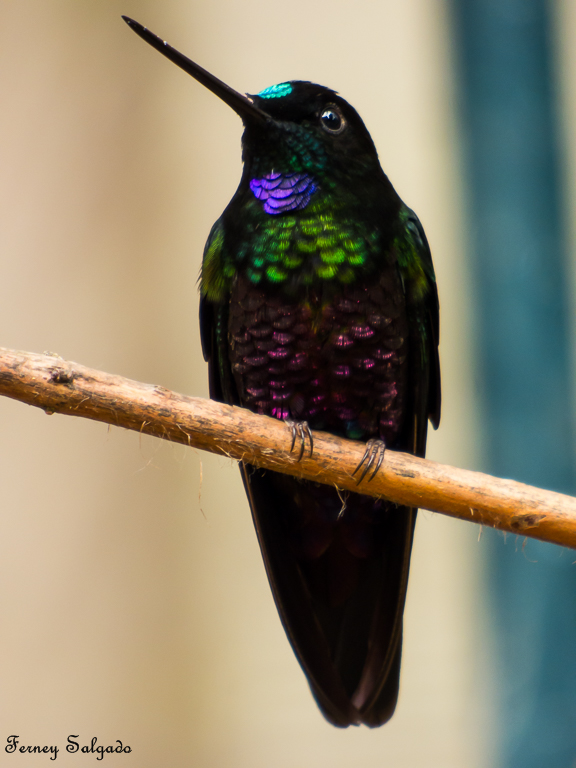The Gray-headed Tanager (Eucometis penicillata) is a species of passerine bird in the Thraupidae family, the only one in the monotypic genus Eucometis. It is native to tropical America (Neotropics), widely distributed from southern Mexico to Paraguay.

Its name comes from the Greek Ortalis which means hen and Columbian refers to Colombia, which is the country from which it is endemic.
This species is found in the Andes with a very localized distribution. Its name Chlorophonia comes from the Greek roots khloros = green and euphonia = euphony or excellence of tone. Its epithet pyrrhophrys comes from the Greek roots purrhos = flame color or red and ophrus = eyebrow.
The orange-chinned parakeet (Brotogeris jugularis), also known as the Tovi parakeet, is a small mainly green parrot of the Brotogeris genus. It is found in Colombia, Costa Rica, El Salvador, Guatemala, Honduras, Mexico, Nicaragua, Panama, and Venezuela. Its natural habitats are subtropical or tropical dry forests, subtropical or tropical moist lowland forests, and heavily degraded former forest. Its name comes from a small clump of bright orange feathers located under the lower beak. Like other parrots, it is capable of imitating simple human speech
This is an ENDEMIC species from the Andes of Colombia from Boyacá to the Sabana de Bogotá. It is currently in a Threat state and its main threat is habitat loss. Its name Rallus is the Latinized form of the French term rale = rálido and its epithet semiplumbeus means half gray and derives from the Latin roots semi = half and plumbeus = leaden gray.
The blue-headed parrot is about 28 cm (11 in) long and weighs 245 g. It is mainly green with a blue head, neck and upper breast, red undertail coverts, and some yellowish on the wing coverts. The upper mandible is black with reddish areas on both sides. They have dark ear patches.
It is a hummingbird of average size. Long and slender bill. Its tones vary between black and greenish black, passing through green and aquamarines. Its beautiful colors are appreciated in good daylight. Inhabitant of humid forests and gardens.
Hummingbird of average size. This particular hummingbird has a very short beak. Its tones range from blacks, through iridescent golds and greens. Long and forked tail. Inhabitant of humid forests.
The Black-throated mango is a common hummingbird on the edges of the jungle and close to natural water deposits. It is the most widely distributed species of the genus and its name Anthracothorax comes from the Latin roots Anthrax = coal and thorax = chest. The epithet nigricollis derives from the Latin roots niger = black and collis = neck.
The black-bellied whistling duck (Dendrocygna autumnalis), formerly also called black-bellied tree duck, is a whistling duck that breeds from the southernmost United States and tropical Central to south-central South America. In the USA, it can be found year-round in parts of southeast Texas, and seasonally in southeast Arizona, and Louisiana’s Gulf Coast. It is a rare breeder in such disparate locations as Florida, Arkansas, Georgia, Tennessee, and South Carolina. There is a large population of several hundred that winter each year in Audubon Park in uptown New Orleans, Louisiana. Since it is one of only two whistling-duck species native to North America, it is occasionally just known as the «whistling duck» in the southern USA.












